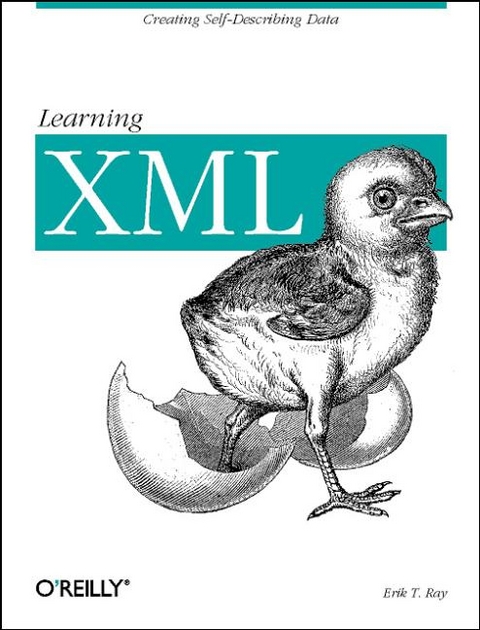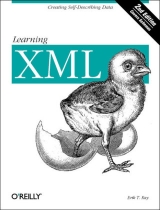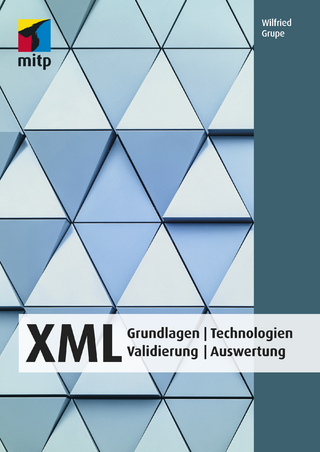
Learning XML
O'Reilly Media (Verlag)
978-0-596-00046-2 (ISBN)
- Titel erscheint in neuer Auflage
- Artikel merken
The arrival of support for XML - the Extensible Markup Language - in browsers and authoring tools has followed a long period of intense hype. Major databases, authoring tools (including Microsoft's Office 2000), and browsers are committed to XML support. Many content creators and programmers for the Web and other media are left wondering, "What can XML and its associated standards really do for me?" Getting the most from XML requires being able to tag and transform XML documents so they can be processed by web browsers, databases, mobile phones, printers, XML processors, voice response systems, and LDAP directories, just to name a few targets. In "Learning XML", the author explains XML and its capabilities with references to real-life projects and other cogent examples. "Learning XML" shows the purpose of XML markup itself, the CSS and XSL styling languages, and the XLink and XPointer specifications for creating rich link structures. The basic advantages of XML over HTML are that XML lets a Web designer define tags that are meaningful for the particular documents or database output to be used, and that it enforces an unambiguous structure that supports error-checking.
XML supports enhanced styling and linking standards (allowing, for instance, simultaneous linking to the same document in multiple languages) and a range of new applications. For writers producing XML documents, this book demystifies files and the process of creating them with the appropriate structure and format. Designers will learn what parts of XML are most helpful to their team and will get started on creating Document Type Descriptions. For programmers, the book makes syntax and structures clear. It also discusses the stylesheets needed for viewing documents in the next generation of browsers, databases, and other devices.
Erik Ray is a software wrangler for the computer book publisher O'Reilly and Associates, helping to move production to an XML-based workflow. He lives with his wife Jeannine and 5 birds in Saugus, Massachusetts. When not writing, he can be found practicing kendo, watching Japanese animation, playing go, or stalking antiquarian book fairs to indulge his fetish for 19th-century children's books and machine bolt catalogs.
Preface Chapter 1. Introduction What Is XML? Origins of XML Goals of XML XML Today Creating Documents Viewing XML Testing XML Transformation Chapter 2. Markup and Core Concepts The Anatomy of a Document Elements: The Building Blocks of XML Attributes: More Muscle for Elements Namespaces: Expanding Your Vocabulary Entities: Placeholders for Content Miscellaneous Markup Well-Formed Documents Getting the Most out of Markup XML Application: DocBook Chapter 3. Connecting Resources with Links Introduction Specifying Resources XPointer: An XML Tree Climber An Introduction to XLinks XML Application: XHTML Chapter 4. Presentation: Creating the End Product Why Stylesheets? An Overview of CSS Rules Properties A Practical Example Chapter 5. Document Models: A Higher Level of Control Modeling Documents DTD Syntax Example: A Checkbook Tips for Designing and Customizing DTDs Example: Barebones DocBook XML Schema: An Alternative to DTDs Chapter 6. Transformation: Repurposing Documents Transformation Basics Selecting Nodes Fine-Tuning Templates Sorting Example: Checkbook Advanced Techniques Example: Barebones DocBook Chapter 7. Internationalization Character Sets and Encodings Taking Language into Account Chapter 8. Programming for XML XML Programming Overview SAX: An Event-Based API Tree-Based Processing Conclusion Appendix A. Resources Appendix B. A Taxonomy of Standards Glossary Index
| Erscheint lt. Verlag | 8.2.2001 |
|---|---|
| Zusatzinfo | glossary, index |
| Verlagsort | Sebastopol |
| Sprache | englisch |
| Maße | 178 x 229 mm |
| Gewicht | 580 g |
| Einbandart | kartoniert |
| Themenwelt | Informatik ► Programmiersprachen / -werkzeuge ► XML |
| Mathematik / Informatik ► Informatik ► Web / Internet | |
| ISBN-10 | 0-596-00046-4 / 0596000464 |
| ISBN-13 | 978-0-596-00046-2 / 9780596000462 |
| Zustand | Neuware |
| Haben Sie eine Frage zum Produkt? |
aus dem Bereich

